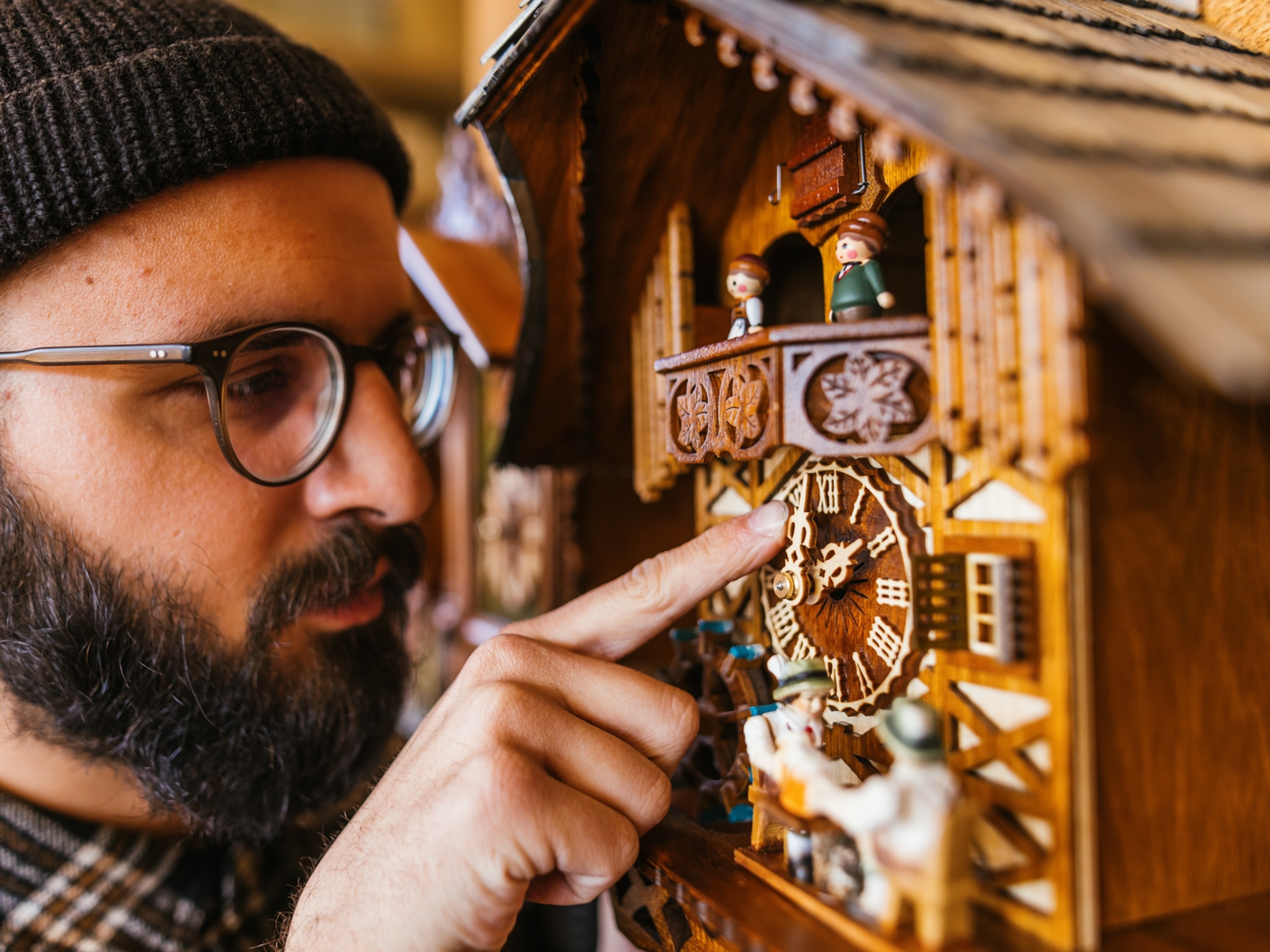Good trips come and go. Bad trips are forever. There is nothing more forgettable than a journey that goes exactly to plan. That’s why I’ll take a bad trip over a good one any day, a seemingly twisted doctrine that says a lot about human nature, the way we remember—and why we travel in the first place.
The label “bad trip” covers a lot of ground. Some trips skew only slightly: a missed connection, a rained-out parade. Other trips careen so wildly off track they make headlines. The awfulness of the 1910 Terra Nova expedition to Antarctica, recounted beautifully in Apsley Cherry-Garrard’s The Worst Journey in the World, turned this debacle into a classic of adventure literature. A trip needn’t involve subzero temperatures to qualify as bad. Travel long enough and eventually all travelers experience their own “worst journey in the world.”
There’s a reason the words “travel” and “travail” share a common root.
The test of travel
For the past few decades, social scientists have poked and prodded our psyches, searching for the secrets to happy people, and happy places. One consistent finding: We’re not very good at predicting what will and will not make us happy. We think amassing more stuff will do the trick, yet studies consistently find it is experiences, not material possessions—doing, not having—that yield the greatest contentment.
Travelers might assume a perfectly smooth journey will boost our happiness. Experience suggests a few bumps in the road make the journey memorable.
Bad trips love company. Nothing tests the sturdiness of an old relationship, or cements a new one, like a journey gone awry.
Eric Weiner, Author
I think the real reason we travel is to stretch ourselves, test ourselves, and unearth abilities we didn’t know we had. We travel to travail. Bad trips supply the narrative arc for our hero’s journey, that ancient archetype elucidated by Carl Jung and Joseph Campbell, among others. The steps are always the same. Step one: Hero embarks on adventure. Step two: Hero is tested. Step three: Hero passes test. Step four: Hero returns home transformed. Over the centuries, travelers from Marco Polo to Ibn Battuta to Gertrude Bell have fine-tuned the hero’s journey.
Everyone’s notion of a bad trip is a bit different. For American author and journalist Martha Gellhorn, nothing was worse than a boring trip and nothing more boring than a cruise. (“It bores me to even think of such a trip.”) In 1944 she found herself on a kind of un-cruise, crossing the Atlantic aboard a Norwegian dynamite ship. The ship’s hold was loaded with high explosives. The food was terrible, the drinks nonexistent, the crew humorless. There were no lifeboats. When the ship reached Liverpool safely, she was relieved but also oddly wistful. She had enjoyed her bad trip. “If the choice was between a cruise ship and a dynamite ship, I’d have no trouble choosing.”
(These travel books document the worst trips in the world.)
Then there are those stubbornly optimistic travelers, like British author Jan Morris, who “made a professional specialty of the happy journey.” No hardship or setback could dent her cheerfulness. To prove her point, she once suggested a thought experiment. What if the various mishaps she endured over a lifetime of travel were to converge on a single journey? What if she were to find herself “robbed of my passport and plane ticket, my luggage having already been lost in flight, while suffering from extreme diarrhea during a high summer heat wave and a severe water shortage, while the local electricity supply and telephone service have been cut off because of political disturbances.”
Terrible trip, right? No, says Morris. “Why, I would have said to myself, how lucky I am it isn’t raining.” For her, a bad trip is the exception that proves the rule, the bump in the road that renders the smooth stretches more enjoyable.
Friends and memories
Bad trips love company. Nothing tests the sturdiness of an old relationship, or cements a new one, like a journey gone awry.
It also explains why The Worst Journey in the World makes for such compelling, oddly uplifting reading. The author, an assistant zoologist way out of his depth, recounts in excruciating detail how he and two fellow explorers embarked on a quixotic search for emperor penguin eggs. Cherry, as the young man was known, describes an almost unimaginable ordeal: meager rations, brutal cold (temperatures dipped to minus 77 degrees), and unrelenting darkness. Yet the men never lost hope, or their warm camaraderie.
Bad trips reveal much about the workings of human memory. We typically think of memory as a kind of photograph or digital record we retrieve at will. In fact, memory is much more fluid, and complex, than that. We don’t retrieve memories so much as form them, construct them, a cognitive edifice that bends and flexes over time.
(Here’s why planning a trip can help your mental health.)
Negative events make deeper impressions than positive ones, research shows. It’s called the “negativity bias,” and from an evolutionary perspective, it makes sense. In order to survive, it was more important that early humans recalled the location of the lion den, rather than that beautiful rock formation.
The negativity bias, though, is counterbalanced by another psychological force: the “fading affect bias.” Simply put, over time, we forget the bad stuff and remember the good. And, as a recent study found, focusing on the context of a negative event diminishes its corrosive effects. Researchers placed 19 participants in a brain scan, then showed them a series of disturbing photographs superimposed upon a neutral background. When asked to shift their focus to the neutral background, they rated the photographs as less negative and retained fewer detailed memories. Our psyches shed negative memories and preserve positive ones, a tendency that grows more pronounced as we age.
Memory is more than mere cognition. Our emotions play a large role. What we are feeling during an event determines how likely we are to recall it, and in how much detail, research shows. Heightened emotions lead to heightened memories.
Our retelling of a travel tale changes over time. That big fish you caught gets just a bit bigger in each version. Remarkably, at least one study found that these revised stories lead to revised memory. You don’t merely tell incredulous friends that the fish you caught “was the size of a small car,” you believe it. You remember it that way.
(Why travel should be considered an essential human activity.)
All this research lays bare an essential truth about travel: It is not only a physical and cognitive activity but also a creative one. More important than a full itinerary is a rich imagination, for it’s not the journey that is memorable; the remembering makes it so.
In other words, your trip, good or bad, doesn’t end when you return home. In a very real sense, it has only begun.
Eric Weiner is a former foreign correspondent for NPR and the author, most recently, of The Socrates Express: In Search of Life Lessons from Dead Philosophers. Follow him on Twitter.
You May Also Like
Go Further
Animals
- Octopuses have a lot of secrets. Can you guess 8 of them?
- Animals
- Feature
Octopuses have a lot of secrets. Can you guess 8 of them? - This biologist and her rescue dog help protect bears in the AndesThis biologist and her rescue dog help protect bears in the Andes
- An octopus invited this writer into her tank—and her secret worldAn octopus invited this writer into her tank—and her secret world
- Peace-loving bonobos are more aggressive than we thoughtPeace-loving bonobos are more aggressive than we thought
Environment
- This ancient society tried to stop El Niño—with child sacrificeThis ancient society tried to stop El Niño—with child sacrifice
- U.S. plans to clean its drinking water. What does that mean?U.S. plans to clean its drinking water. What does that mean?
- Food systems: supporting the triangle of food security, Video Story
- Paid Content
Food systems: supporting the triangle of food security - Will we ever solve the mystery of the Mima mounds?Will we ever solve the mystery of the Mima mounds?
- Are synthetic diamonds really better for the planet?Are synthetic diamonds really better for the planet?
- This year's cherry blossom peak bloom was a warning signThis year's cherry blossom peak bloom was a warning sign
History & Culture
- Strange clues in a Maya temple reveal a fiery political dramaStrange clues in a Maya temple reveal a fiery political drama
- How technology is revealing secrets in these ancient scrollsHow technology is revealing secrets in these ancient scrolls
- Pilgrimages aren’t just spiritual anymore. They’re a workout.Pilgrimages aren’t just spiritual anymore. They’re a workout.
- This ancient society tried to stop El Niño—with child sacrificeThis ancient society tried to stop El Niño—with child sacrifice
- This ancient cure was just revived in a lab. Does it work?This ancient cure was just revived in a lab. Does it work?
- See how ancient Indigenous artists left their markSee how ancient Indigenous artists left their mark
Science
- Jupiter’s volcanic moon Io has been erupting for billions of yearsJupiter’s volcanic moon Io has been erupting for billions of years
- This 80-foot-long sea monster was the killer whale of its timeThis 80-foot-long sea monster was the killer whale of its time
- Every 80 years, this star appears in the sky—and it’s almost timeEvery 80 years, this star appears in the sky—and it’s almost time
- How do you create your own ‘Blue Zone’? Here are 6 tipsHow do you create your own ‘Blue Zone’? Here are 6 tips
- Why outdoor adventure is important for women as they ageWhy outdoor adventure is important for women as they age
Travel
- This royal city lies in the shadow of Kuala LumpurThis royal city lies in the shadow of Kuala Lumpur
- This author tells the story of crypto-trading Mongolian nomadsThis author tells the story of crypto-trading Mongolian nomads
- Slow-roasted meats and fluffy dumplings in the Czech capitalSlow-roasted meats and fluffy dumplings in the Czech capital







